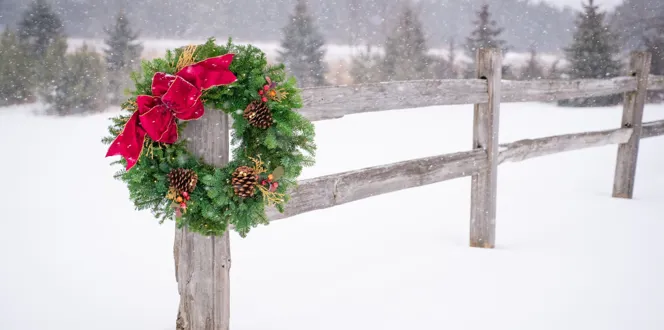For people living in cold climates, a sunny, warm day that interrupts an otherwise gloomy winter is something to look forward to.
For evergreens in cold climates? Well...sunny winter days aren’t so sweet. Harsh sun actually works against evergreens in winter. Come springtime, these endlessly green plants might turn brown from the damage.
Below, find out why your evergreen shrubs may not have gotten off to a good start in spring.
My Evergreen Shrubs (Boxwood, Dwarf Alberta Spruce) Have Winter Burn. What Now?
Winter burn sounds pretty straightforward, but what exactly does it mean?
Here’s the gist—evergreen shrubs, unlike other plants, hold on to their foliage in winter, and it takes tons of moisture to keep their needles green throughout the season. Anytime bright sun or harsh wind is in the forecast, the needles lose moisture, and since the ground is frozen, plant roots just can’t take up enough water from the soil to replace that lost moisture. Eventually, the needles get way too dry, causing winter burn.
How do I know if my shrubs are affected?
Winter burn starts with the tips of shrub needles turning brown, and then eventually full needles on a whole section of the tree are brown and dry.
Not surprisingly, the discolored section appears on the side of the plant that gets the most sun or wind throughout winter. But that doesn’t mean winter burn is immediately obvious. Evergreen shrubs might look green and healthy leading up to spring, and then start to turn brown just as the growing season arrives.
What are some tips for winter burn treatment? Will my shrubs recover?
Odds are, an evergreen shrub that has winter burn will bounce back. Even though brown chunks might make the plant look dead, your shrub will more than likely sprout new needles.
To be sure, prick a small area of an affected branch with your fingernail or a pocket knife. It should be green and moist underneath. Any branches that are still green under the bark are alive and can grow new needles. If any branches are brown and dry underneath, you should prune those out.
Lastly, make sure your shrubs get lots of water throughout spring. They’ll thank you with a flush of new green needles!
Can I prevent winter burn before next year?
Kudos to you for thinking ahead! Yes, there are steps you can take to protect your shrubs.
Here are four things you should do to prevent evergreen winter burn:
- Thoroughly water your shrubs in fall all the way up until the ground freezes. Hydrated plants have a much better chance at dodging winter burn.
- Apply 3-4 inches of mulch to the ground beneath your shrubs and trees. That’ll seal in the moisture you’re giving them when you water.
- Try an anti-desiccant spray. It’s a wax-like coating that helps evergreens avoid moisture loss in winter. Read more about anti-desiccant sprays in this blog post.
- If your shrubs are directly exposed to harsh sun or wind in winter, wrap them for protection. Here’s how to wrap an evergreen shrub with burlap.





